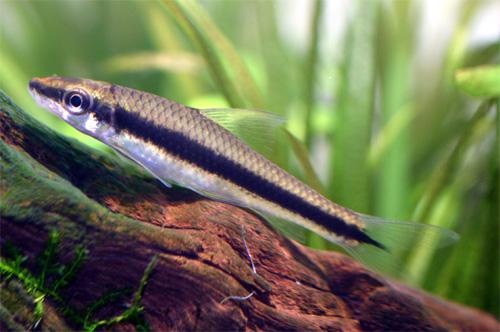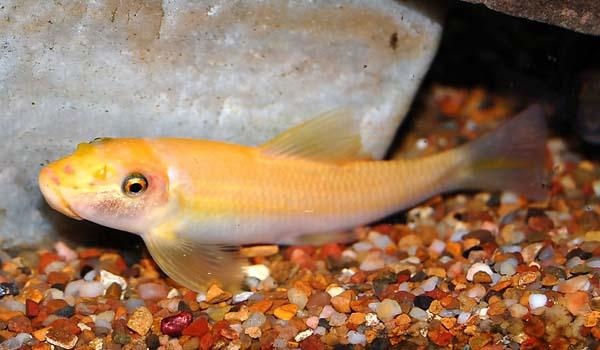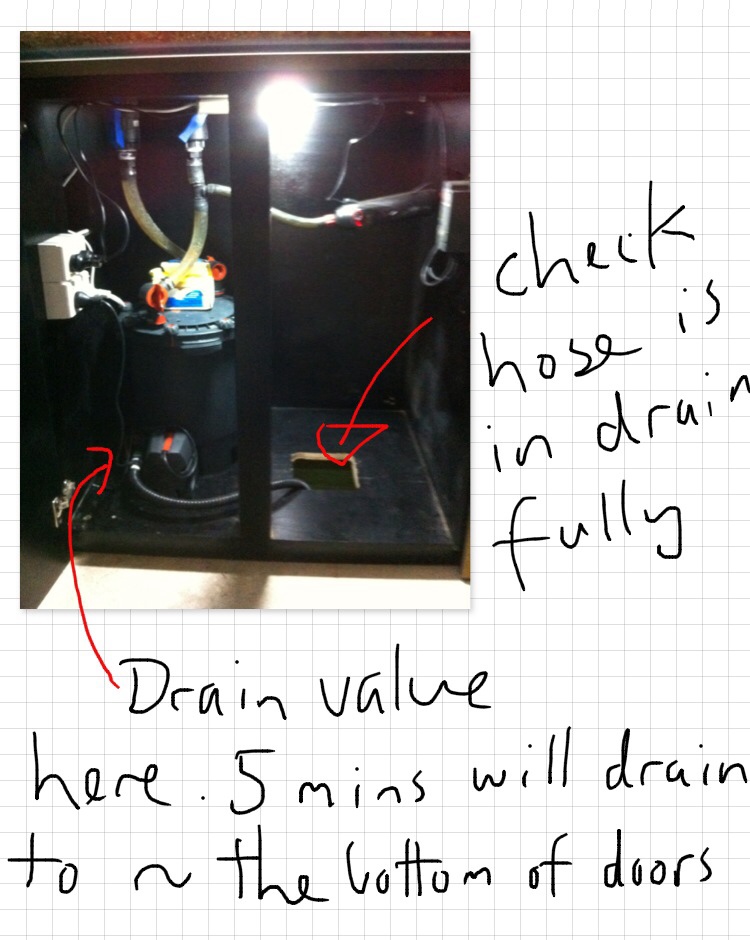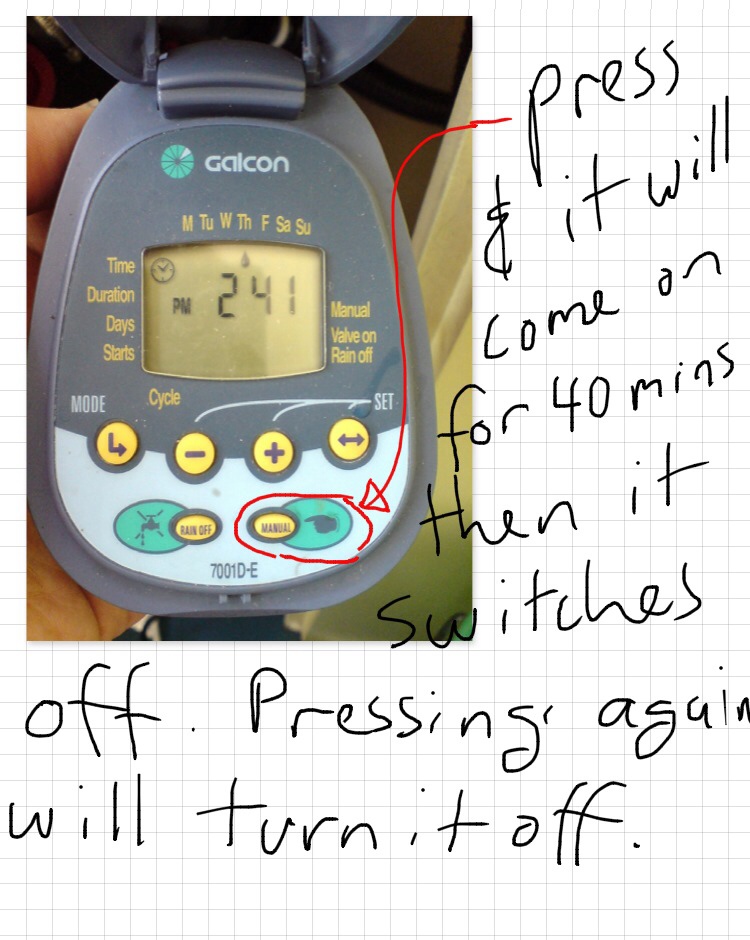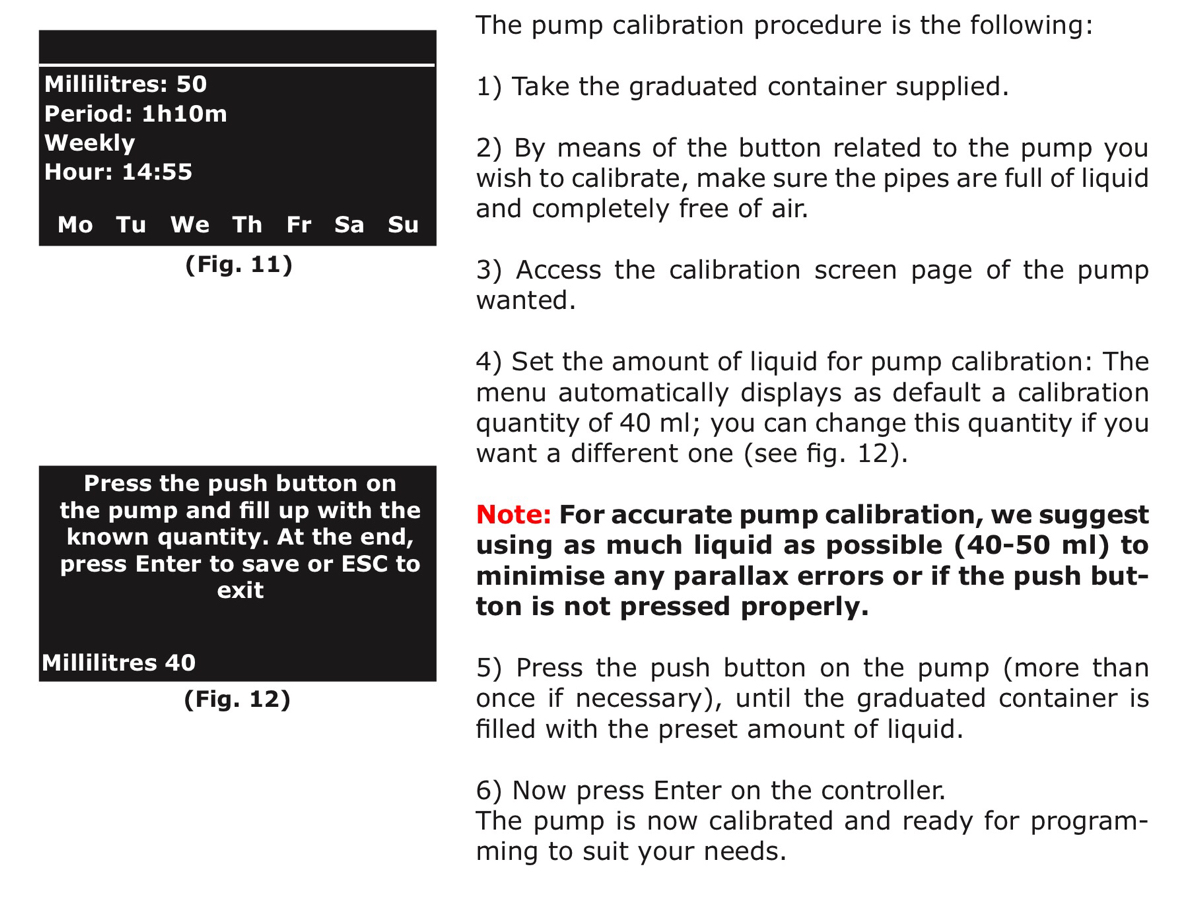Information
Service to 23 Oxford St, Oakleigh Receptionist: Yota
-
Conducted on
STARTERS
The Basics
-
Employee (if more personnel present add in notes)
-
Date
-
Time Started
Observations
-
Photos Before. 1 OVERALL. 2-3 CLOSEUPS on Plants and fish
FISH
-
Veil-tail Angels, Tapajos Horsefaces, black emperor tetras, clown loaches
- Great; vibrant, eager for food
- some individuals not right.
- sulky, sluggish, isolated from group
- dead fish, cloudy stinky water
-
Take photos of individuals and check for CAUSES. Questions: 1. Is it just an individual or are many affected? 2. Check for uneaten food, levels of ammonia or nitrite. 3. Filter or heater stopped or malfunctioning?
-
Anything on BODY? <br>WHITE SPOTS?<br>FUNGUS?<br>WOUNDS?
-
Take PHOTO where possible and NOTE down details.
-
Plan for LARGE WATER CHANGE (75-90%) with thorough GRAVEL VAC. Use STRESS COAT and BLUE SALTS to guard against chlorine and infection.
-
CONTACT BRUCE IMMEDIATELY
-
Take PHOTO where possible and NOTE down details.
-
Looking good? Place a pinch of Tetrabits in and observe how they eat.
The Workers: SUCKING CATS & FLYING FOXES
-
SUCKING CAT/s sighted? (1-2)
-
SIAMESE FLYING FOX/es sighted? (2-3)
-
How's the algae levels on GLASS & PLANTS?
- Lots of soft brown/green dust everywhere
- Very clear. A few spots on glass and old leaves
- Furry black algae growing on old leaves, pump, glass
- heavy with dark green spots on glass
- dark green algae all over rocks
-
This is an indication that there are no or low numbers of SIAMESE FLYING FOX. Mention in notes.
-
Remove as much as possible, prune old affected leaves off plants. Vacuum up loose pieces from after cleaning glass
-
This is possibly an indication that there are no SUCKING CATS. Mention in notes.
-
Check nitrate and phosphate levels.
-
Plan for an "Adrian Special"; BEFORE draining, turn OFF pumps, scrape all of every glass surface and carefully brush clean all rocks Then drain 80% water.
PLANTS. Anubias, Bolbitis Fern, Narrow-leaf Java Fern
-
Any leaves looking old, perforated, yellow, or heavily algae covered?
-
Plan to remove all affected leaves. Outer ones first. Ones that are more stubborn should be peeled carefully down
-
Any plants uprooted or dis-lodged?
-
Plan to replant, cover and (in case of dislodged Java fern) re-anchor to wood
Setup
-
Slide foyer furniture forward to allow safe access.
-
Remove AUTO FEEDER & AUTO LIQUIDDOSERS from top and store on their backs on floor of bathroom with feeder/doser barrels facing upwards so they don't dose while you are working
Tests part 1
Tests part 1
-
TEMPERATURE test (ideal 27 - 28.5 C)
-
Has the auto after change happened recently? (Check Galcon solenoid program: scroll with MODE button to see programmed days and time)
-
This definitely will have cooled the tank down and so the most likely explanation for this. If it was just done for example a temp reading of 24 would be normal, even 23 in the winter months. If even lower then consult Bruce
-
A bit too cool. Are INLINE HEATERS functioning/plugged in? (2 on right filter, 1 on left)
-
Unplug faulty unit. Notify Bruce to arrange replacement. Increase remaining units a little.
-
Increase THERMOSTAT on the heater whose thermostat is switching off at a lower temp by the SUITABLE AMOUNT to bring it up within the range (see above) and make note of how much.
-
Increased THERMOSTAT by:
-
too warm. Are THERMOSTATS on heaters functioning? <br>(Does the indicator light come on and off when you turn the thermostat setting up and down?)
-
Decrease THERMOSTAT (anticlockwise) on the highest set heater by the SUITABLE AMOUNT to bring it down within the range (see above) and note by how much.
-
Decreased THERMOSTAT by:
-
if the THERMOSTAT doesn't respond to being turned down then better to have a cool tank than risking cooking the fish. Unplug faulty unit. Notify Bruce to arrange replacement.
-
Good. Refill with HEATER or KETTLES OF BOILED WATER (boiling water tap in kitchen) in COLD months.
-
Rinse 2 TEST VIALS in tank water: pH (square vial) and GH (large round vial) MEASURE 5ml in each and SET ASIDE for later. Tip: use SQUARE VIAL or a SYRINGE to measure an accurate 5ml for the GH.
The Drain
The Drain (50-70%) Permanent drain hose from filter. SHORT hose (should also be stored with one end in drain hole) is for GRAVEL VAC LONG hose for reaching to bathroom for filter services
DIRECT DRAIN
-
Open FILTER DRAIN VALVE
-
GRAVEL VACUUM Lightly on surface of sand, focus on places where debris has built up. Often not needed if the horsefaces have been sifting through the sand as usual.
-
Even if vac not needed, set up anyway to use to increase drain speed.
Use the SHORT DRAIN HOSE already with one end in the floor drain hole.
You can either rest the started vac head on a rock or somewhere off the sand OR, once you've started the syphon, to reattach the hose in INSIDE the tank and snake the hose to start a stronger syphon direct through the hose itself. Then you can remove the vacuum hose and place a protective strainer over the end to prevent curious fish being sucked up.a
Things To Do During Drain
-
CLEAN GLASS; easiest at LOW WATER LEVELS. SOFT ALGAE lightly with MAGNET CLEANER (MAKE SURE BOTH SIDES ARE SUPER CLEAN FIRST!!). Even if you can't see any, best to do a light pass over the whole thing. DARK GREEN spots: best with SCRAPER.
-
Work on PLANTS
-
FILTER SERVICE PLANNED?
-
Tap here for instructions ====>
-
INSTRUCTIONS: UNDER CONSTRUCTION.
-
Did you do a gravel vacuum?
-
How dirty was it?
The Refill
The Refill
-
Press manual button (finger symbol) on GALCON controller (Mounted on back wall underneath, access via middle left panel). See pic below. This should bring up one programmed duration of refill (10 mins or there abouts). New water comes out with the filter. You'll notice an increase in outflow of the UV outlet on top left NB check on again later. It will probably need another few goes as 10 mins may not be enough. TIPP: if it is only 5 -10 mins remaining on the timer then you can stop and restart to bring up another mins.
-
MANUAL SETTING ON CONTROLLER diagram ==>
-
CONTROLLER MANUAL TIMED REFILL
-
SOUP HEATER in COLD months or in large water changes. REMEMBER: always plug into WALL OUTLET. ONE above on back wall Mount so the heating element hangs in the middle OPEN SPACE, away from glass and plants if possible
Things To Do During Refill
-
CLEAN GLASS; easiest at LOWER WATER LEVELS. SOFT ALGAE lightly with MAGNET CLEANER (MAKE SURE BOTH SIDES ARE SUPER CLEAN FIRST!!). Even if you can't see any, best to do a light pass over the whole thing. WARNING: go SUPER SLOW & CAREFUL when close to the sand and don't go at all lower than 2 inches above the gravel. Use long handle scraper for this part. DARK GREEN spots: best with SCRAPER.
-
Work on PLANTS
-
Even out sand. Generally less on front glass and sloping upwards to the back. BE CAREFUL when working around the filter intake while pump is still on so as it doesnt suck up sand
-
Finish up filter service if applicable
Tests (continued)
-
pH Test? 3 drops in 5ml. (ideal pre CO2 range 6.5-7)
-
ADD approx 2 tsp CORAL SAND.
-
ADD approx 3 tsp CORAL SAND
-
ADD approx 4 tsp CORAL SAND
-
Is this expected? Been a recent large dose of coral sand last time?<br>CO2 started.
-
Rinse test tube thoroughly and retest. (Any traces of ammonia or GH tester solution will give a false alkaline reading)
-
WOAH! Unlikely! Rinse test tube thoroughly and retest. (Any traces of AMMONIA TEST or GH TEST solutions will give a false alkaline reading) If still high then we must assume that there has been an excess amount of coral sand and all we can do is water change. It will eventually come down as the coral sand dissolves.
-
GH TEST. number of drops to turn from ORANGE to GREEN
-
SIZE of water change:
-
ADD 1 Measure spoon GH POWDER
-
ADD 2 Measure spoon GH POWDER
-
SIZE of water change:
-
ADD up to 1 Measure spoon GH POWDER
-
ADD up to 2 Measure spoons GH POWDER
-
ADD up to 3 Measure spoons GH POWDER
-
Depending on SIZE of WATER CHANGE, add NO SALTS and let WC reduce the GH to within desired range
-
NITRATE TEST (if required)
-
Depending on state of plants, this is POSSIBLY grounds for increase in NITROGEN dose. Contact Bruce for further instructions.
-
GENERALLY this is the OPTIMUM RANGE. HOWEVER if there is POOR PLANT GROWTH observed then possibly means therefore not enough K and thus they are being starved. Contact Bruce for further instructions.
-
Has the COMPLETE dosed already today? Note, this dosing pump is programmed for every TUESDAY <br>If so then this will contribute to a higher nitrate reading
-
Almost certainly and LACK of POTASSIUM and/or OVER DOSE of NITROGEN <br>Are DOSING PUMPS for K and N well primed and unblocked?
-
Done a calibration of the PUMPS recently? (In the last 5months)
-
Look at POTASSIUM dose. Consult Bruce
-
Do a manual dose of 10ml of NITROGEN while holding a test vial underneath. <br>Did it dose the correct volume?
-
Has it been over-dosing or under-dosing?
-
OVER-DOSING by how much?
-
Perform a calibration of all three pumps
-
UNDER-DOSING by how much?
-
Perform a calibration of all three pumps
-
Look at increasing POTASSIUM dose. Consult Bruce
-
Look at increasing POTASSIUM dose. Consult Bruce
-
Give details of problem
-
If after fixing the problem, you're not convinced this was sufficiently causing problems in dosing of any ferts then CONTACT Bruce to discuss.
-
PHOSPHATE TEST (if required, algae or plant issues)
-
GENERALLY this is the OPTIMUM RANGE. Some say 1/10th of the nitrate level. HOWEVER if there is POOR PLANT GROWTH observed then possibly means therefore not enough K and thus they are being starved. Contact Bruce for further instructions.
-
Only phosphate source here is the fish food. Perhaps an increase in K dose will help. Make follow up note and discuss with Bruce later
-
Is there premature aging/falling off of leaves on any of the plants?
-
Only phosphate source here is the fish food. Perhaps a manual liquid dose or increase in feeding . Make follow up note and discuss with Bruce later
-
Then don't worry about it. Enjoy algae-free aquarium maintenance!
Additives
-
Coral sand added? (Low pH)
-
How many teaspoons?
Packing up
SUPPLIES; ANY REFILLING TO BE DONE IN SINK OR OUTSIDE!
LIQUID DOSER (DAILYGRO in rear cupboard)
-
LIQUID DOSER topped up?
-
If the barrel is still pretty full (we only come every 4 weeks) then possibly there is a block or the program is not activated. Test/inspect.
-
Battery ok?
-
Replace batteries (2 x AA), NOTE DOWN PROGRAM TIMES FIRST as you'll lose all info!
-
Replace batteries (should be some on site, ask YOTA) <br>reprogram for a dose of 2 rotations at 10am
-
Make note in ACTION here and address to Bruce
-
DOSE ARROWS showing? <br>Down-facing arrows next to program number, 1 per rotation programmed
-
Time of day correct?
-
DAILYGRO LIQUIDOSER returned to position and tested?
AUTO FEEDER
-
AUTO FEEDER topped up?<br>Hold finger over opening to prevent food spilling
-
If the barrel is still pretty full (we only come every 4 weeks) then possibly the opening is closed or not open enough. Also maybe program not activated. See below
-
Make sure the opening has not shifted. Run a test feed to check its putting in not too much/too little food
-
Battery ok?
-
Replace batteries (2 x AA,ask Yota), NOTE DOWN PROGRAM TIMES FIRST as you'll lose all info!
-
Make note in ACTION here and address to Bruce
-
Replace batteries (should be some on site, ask YOTA) <br>Program a modest 2 feeds per day, approx 10am and 3pm
-
Make note in ACTION here and address to Bruce
-
Time of day correct?
-
FEED ARROWS showing? <br>Sign that program is activated <br>Down-facing arrows next to program number, 1 per rotation programmed
-
Make ACTION note here for Bruce and activate a conservative setting of: 2 programs with one rotation (one downward ⬇️) per time programmed
-
AUTO FEEDER returned to position and tested?
FERTS & FOOD (cupboard behind tank, by copy machine)
-
DAILYGRO FERTILISER. HOW MUCH IS LEFT?
-
Make note for more needed next time
-
Tetrabits supply refill/replace?
-
HOW MUCH IS LEFT?
-
Make note here that some will be needed next time
Equipment Check
-
Correct time on LIGHTS?
-
Contact Bruce
-
LIGHTS: all LEDS working?
-
Details
-
Notes. Any extra work performed? Any additions of fish? Any questions...?
FINAL CHECKS
-
HEATERS and FILTER PUMP ON and functioning?
-
OUTSIDE GLASS, CABINETRY etc CLEAN & DRY?
-
Finished (or close to) refilling? Check the remaining time on the REFILL TIMER and if more than 5 mins then close off. You can leave it to overflow a little. But we don't want to chill the tank too much
-
MOST IMPORTANT: were the lights OFF when you arrived?
-
HAVE YOU OVER-RIDDEN THE LIGHTS (changed the time) TO BE ABLE TO WORK? Lights are programmed to come on around 9am
-
MOST IMPORTANT #2: is the FILTER DRAIN PROPERLY CLOSED? Check the end of the drain hose to confirm nothing flowing out. The tap should be vertical.
-
Got your: BASKET STRAINER? TOOTH BRUSH? TEASPOON?
-
Photos After. 1 x OVERALL. Both sides, 2 half shots CLOSEUPS of any REARRANGED PLANT.
-
Time Finished






